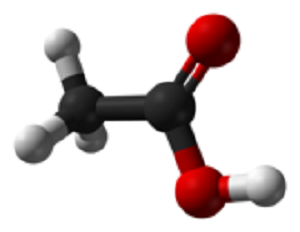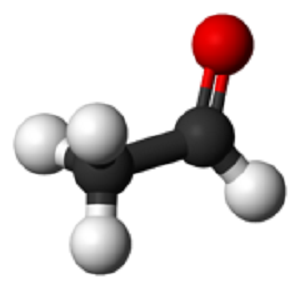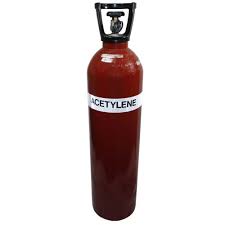Acetic acid-Health Hazard and Toxicity
Sep 2,2019
Description
Acetic acid is a colourless liquid organic compound with the chemical formula CH3COOH . Acetic acid has a distinctive sour taste and pungent smell. In addition to household vinegar, it is mainly produced as a precursor to polyvinyl acetate and cellulose acetate. It is classified as a weak acid since it only partially dissociates in solution, but concentrated acetic acid is corrosive and can attack the skin.

Toxicity Data
LD50 oral (rat) 3310 mg/kg
LD50 skin (rabbit) 1060 mg/kg
LC50 inhal (mice) 5620 ppm (1 h)
PEL (OSHA) 10 ppm (25 mg/m3)
TLV-TWA (ACGIH) 10 ppm (25 mg/m3)
STEL (ACGIH) 15 ppm (37 mg/m3)
Health Hazard
Acetic acid is a highly corrosive liquid. Contact with the eyes can produce mild to moderate irritation in humans. Contact with the skin may produce burns. Ingestion of this acid may cause corrosion of the mouth and gastrointestinal tract. The acute toxic effects are vomiting, diarrhea, ulceration, or bleeding from intestines and circulatory collapse. Death may occur from a high dose (20–30 mL), and toxic effects in humans may be felt from ingestion of 0.1–0.2 mL.
Acetic acid is toxic to humans andanimals by inhalation and skin contact. Inhumans, exposure to 1000 ppm for a fewminutes may cause eye and respiratory tractirritation. Rabbits died from 4-hour exposureto a concentration of 16,000 ppm in air.
Toxicity
The acute toxicity of acetic acid is low. The immediate toxic effects of acetic acid are due to its corrosive action and dehydration of tissues with which it comes in contact. A 10% aqueous solution of acetic acid produced mild or no irritation on guinea pig skin. At 25 to 50%, generally severe irritation results. In the eye, a 4 to 10% solution will produce immediate pain and sometimes injury to the cornea.
Acetic acid solutions of 80% or greater concentration can cause serious burns of the skin and eyes. Acetic acid is slightly toxic by inhalation; exposure to 50 ppm is extremely irritating to the eyes, nose, and throat.Acetic acid has not been found to be carcinogenic or to show reproductive or developmental toxicity in humans.
Flammability and Explosibility
Acetic acid is a combustible substance (NFPA rating = 2). Heating can release vapors that can be ignited. Vapors or gases may travel considerable distances to ignition source and "flash back." Acetic acid vapor forms explosive mixtures with air at concentrations of 4 to 16% (by volume). Carbon dioxide or dry chemical extinguishers should be used for acetic acid fires.
Reactivity and Incompatibility
Contact with strong oxidizers may cause fire.
Storage and Handling
Acetic acid should be handled in the laboratory using the "basic prudent practices"described in Chapter 5.C. In particular, acetic acid should be used only in areas free of ignition sources, and quantities greater than 1 liter should be stored in tightly sealed metal containers in areas separate from oxidizers.
Accidents
In the event of skin contact, immediately wash with soap and water and remove contaminated clothing. In case of eye contact, promptly wash with copious amounts of water for 15 min (lifting upper and lower lids occasionally) and obtain medical attention. If acetic acid is ingested, obtain medical attention immediately. If large amounts of this compound are inhaled, move the person to fresh air and seek medical
attention at once.
In the event of a spill, remove all ignition sources, soak up the acetic acid with a spill pillow or absorbent material, place in an appropriate container, and dispose of properly. Cleaned-up material is a RCRA Hazardous Waste. Respiratory protection may be necessary in the event of a large spill or release in a confined area.
Disposal
Excess acetic acid and waste material containing this substance should be placed in a covered metal container, clearly labeled, and handled according to your institution'swaste disposal guidelines.
- Related articles
- Related Qustion
- What is the Composition of Vinegar and is it Acidic or Alkaline? Feb 28, 2024
Vinegar offers numerous health benefits and enhances the flavor of dishes, making it a kitchen essential. This article will introduce the composition and application of it.
- Acetic acid polarity and related applied research Dec 19, 2023
Acetic acid is a hydrophilic (polar) solvent commonly used in laboratories, similar to ethanol and water.
- Acetic Acid - Application in Meat Processing & Food Industry Mar 10, 2022
Acetic or ethanoic acid is a monocarboxylic acid which occurs naturally in plant and animal tissues and is also a byproduct of ethanol oxidation by Acetobacter , Gluconobacter and other heterofermentative strains of lactic acid bacteria.
Acetaldehyde is an organic chemical compound with the formula CH3CHO, sometimes abbreviated by chemists as MeCHO (Me = methyl). It is one of the most important aldehydes, occurring widely in nature and being produced on a large scale in ind....
Sep 2,2019Fatty aldehydeAcetylene (100% purity) is odourless, but commercial purity has a distinctive garlic-like odour and is very soluble in alcohol and almost miscible with ethane. Acetylene is a flammable gas and kept under pressure in gas cylinders. Under cer....
Sep 2,2019Organic ChemistryAcetic acid
64-19-7You may like
- Acetic acid
-

- $100.00 / 1kg
- 2025-07-07
- CAS:64-19-7
- Min. Order: 25kg
- Purity: 99.99%
- Supply Ability: 200ton
- Acetic acid
-

- $0.00 / 1kg
- 2025-07-06
- CAS:64-19-7
- Min. Order: 1kg
- Purity: 99.99%
- Supply Ability: 20 tons
- Acetic acid
-

- $0.00 / 1kg
- 2025-07-06
- CAS:64-19-7
- Min. Order: 1kg
- Purity: 99.99%
- Supply Ability: 20 tons






